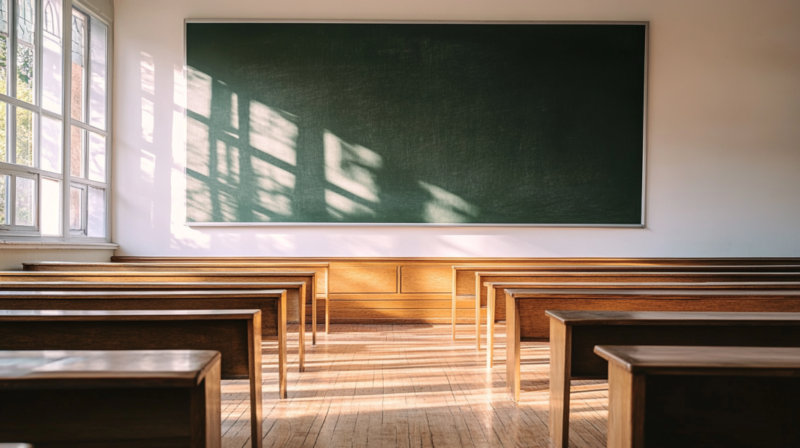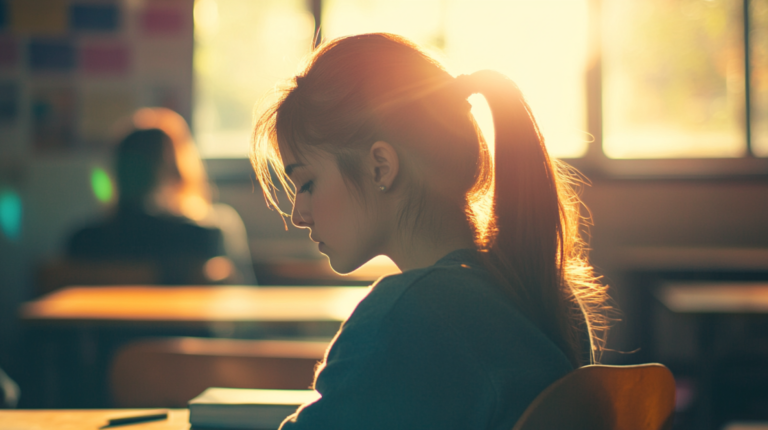If you’ve been following the education scene, you’ve probably noticed something pretty exciting: alternative schools are making waves.
From progressive public schools to experimental private institutions, the traditional model of education is being challenged in some seriously interesting ways.
But what’s behind this shift? Why are alternative schools gaining so much attention, and why are so many parents, educators, and even students gravitating toward them?
Well, let me share my thoughts on why the growth of alternative schools might just be the beginning of something revolutionary in the way we approach learning.
The Traditional Model is Starting to Feel Outdated

Let’s face it: the old-school way of schooling, the kind many of us grew up with, isn’t exactly meeting everyone’s needs anymore. The one-size-fits-all approach simply doesn’t work for a lot of kids. You know the drill – sit in rows, take notes, pass tests.
The system was designed to teach compliance and conformity. But is that really the most effective way to prepare kids for the real world? Is it really fair to expect every student to thrive in a rigid, standardized environment?
More and more, people are realizing that traditional education just doesn’t reflect the needs of modern society. Sure, it works for some, but for others, it’s like trying to fit a square peg into a round hole. That’s where alternative schools come in.
What Makes Alternative Schools Different?
Alternative schools are popping up all over the place, and they come in all shapes and sizes. Some focus on project-based learning, others might put more emphasis on emotional intelligence, and some operate outside the traditional school calendar entirely. They all have one thing in common, though – they prioritize a more personalized and holistic approach to learning.
So, what makes these schools stand out? It’s all about giving students more autonomy, fostering creativity, and nurturing each child’s unique strengths. Unlike traditional institutions, alternative schools tend to be more flexible with their curriculum and teaching methods. Here are just a few reasons why they’re so appealing:
- Personalized learning: Every student learns differently. Alternative schools acknowledge that and adapt teaching methods to meet individual needs.
- Less focus on testing: Many alternative schools focus more on actual learning rather than preparing for standardized tests. This allows for a deeper connection to the material.
- Creativity and critical thinking: Instead of rote memorization, students are encouraged to think critically, problem-solve, and explore their passions.
- Social-emotional growth: Many alternative schools prioritize mental health, emotional intelligence, and life skills, which are just as important as academic knowledge.
- Smaller class sizes: With fewer students, teachers can focus more on each individual, creating a more supportive and personalized environment.
Shifting Priorities in Education
The shift toward alternative education reflects a growing recognition that the world around us is changing fast. In a world dominated by technology, creativity, and innovation, the education system must adapt to prepare students for a future that’s vastly different from the past.
We’ve all heard about the decline of certain industries and the rise of others, like tech, design, and entrepreneurship. Students are increasingly expected to think outside the box, collaborate, and create.
So, why shouldn’t schools reflect that shift? The goal isn’t just to teach kids what to think, but how to think. And alternative schools seem to be more in tune with this new reality than traditional institutions.
Who’s Turning to Alternative Schools?
Switching schools doesn’t automatically fix behavioral issues—it’s the system that often needs change.
On this podcast, #MatthewCicoria and @BruceTinor_IES delve into how alternative schools are revolutionizing approaches to problem behaviors in education.#AlternativeEducation pic.twitter.com/NxtTJj0nfo
— Matt Cicoria (@behaviorpodcast) July 19, 2024
It’s not just parents looking for an option when their kids struggle in the mainstream system. Alternative schools are attracting a broad range of families, from those seeking more academic challenge to those searching for a different approach to emotional support.
Some parents choose alternative schools because they want their children to experience a more hands-on learning environment. They may want their child to explore passions in subjects like arts, science, or technology.
Others look for schools that will provide a safe, supportive space for kids who may not thrive in a typical classroom setting, such as those with learning differences or mental health concerns.
There are even families who simply feel that traditional schools stifle their children’s creativity, and they want a space that encourages independence, self-expression, and personal growth.
The Rise of Hybrid and Online Alternatives
Another factor contributing to the rise of alternative schools is the explosion of online and hybrid learning options. These platforms allow students to learn at their own pace, often with the flexibility to balance their studies with other activities and interests.
They might have access to expert-led workshops, one-on-one tutoring sessions, and collaborative projects that are tailored to their learning style.
While online learning might not work for everyone, it offers a compelling solution for students who are looking for something different. For instance, kids who excel in a subject but struggle with others might find that an online alternative school allows them to focus on their strengths while receiving support in areas where they need improvement.
The Benefits of a More Flexible Approach

The biggest selling point of alternative schools is the sense of freedom they offer both students and teachers. Imagine a classroom where the walls don’t feel like they’re closing in.
A space where students aren’t forced into the same mold as their peers but are encouraged to discover their own passions and strengths. That’s the vision many alternative schools are working toward.
Here are just a few of the benefits that stand out to me:
- Intrinsic motivation: Without the pressure of grades and exams, students are more likely to develop a love for learning. When they’re genuinely curious about something, they’ll take it upon themselves to explore it further.
- Increased engagement: A personalized approach to learning can make students feel more involved and interested in their education. This leads to greater focus, participation, and retention of knowledge.
- Stronger sense of community: With a smaller, close-knit environment, students often feel more connected to their peers and teachers. There’s a deeper sense of belonging and mutual respect that can be lacking in larger schools.
Overcoming the Challenges
@gothicishmess Replying to @trash.on.the.bed Hello new people lmao #alternative #alternativeschool #alt #neurodivergent #mentalhealth #fyp #trending ♬ original sound – Veronika 🩷🇵🇸
Of course, it’s not all sunshine and rainbows. Like anything, alternative schools come with their own set of challenges.
For one, they’re often harder to find, especially if you’re living in an area that doesn’t have many options. Some alternative schools may also come with a higher price tag, making them inaccessible to some families.
In contrast, free education options are more widely available, but they often lack the flexibility and personalized approach that alternative schools offer.
Then there’s the fact that alternative schools are still somewhat under scrutiny. There are concerns about whether they’re preparing students adequately for the future, whether that’s college, the workforce, or whatever comes next.
Some people worry that the lack of standardized tests might result in a less rigorous education, but those who’ve been involved in alternative education argue that students are still learning – just in different ways.
It’s also important to note that alternative education isn’t a perfect fit for every child. Some kids thrive in highly structured environments, and the more flexible model of alternative schools might not suit them as well. It’s all about finding the right match for the individual.
Bottom Line

So, what does the future hold for alternative schools? I believe we’re just beginning to see the tip of the iceberg. More parents are becoming aware of the limitations of traditional schools, and they’re actively looking for alternatives that align with their values and the needs of their children.
As demand grows, we’ll likely see even more diversity in the types of alternative schools available – from those that emphasize creativity and the arts to those that focus on practical life skills or social justice education.
The shift toward alternative schools represents more than just a trend; it’s a signal that education as we know it is evolving. The focus is moving away from one-size-fits-all learning toward a more individualized, holistic approach that meets students where they are and helps them become the best version of themselves.
While alternative schools might not be the answer for every family, they do offer a compelling glimpse into what the future of education could look like. And if you ask me, that future looks pretty exciting. So, here’s hoping that this education revolution only grows stronger from here.

